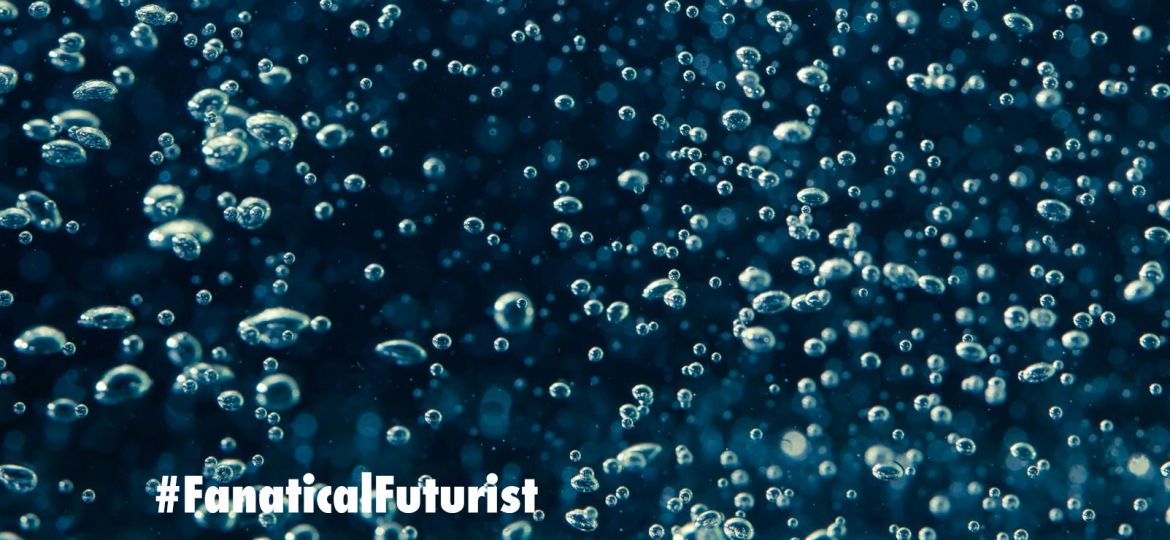
WHY THIS MATTERS IN BRIEF
Water scarcity is one of the greatest worries facing the modern age, and as the world watches one of its great cities face the real prospect of running out of water in months, not years, the search for new water filtration systems has never been more pressing.
Over the past few years Graphene Oxide membranes have been attracting a considerable amount of attention from companies and people who are looking into new, affordable and scalable ways to filter seawater and turn it into fresh drinking water, and now a team from Manchester of University in the UK have made a breakthrough and created a membrane that can remove the common salts from seawater quickly and efficiently, and the breakthrough could help provide clean drinking water for the millions of people around the world who struggle to get adequate access to clean water.
During their development, over the past year, the membranes, which were developed in cooperation with the National Graphene Institute had already shown themselves capable of filtering out small nanoparticles, organic molecules, and even large salts, but until now they couldn’t be used for sieving out the more common salts, something that requires even smaller “sieves.”
The team, led by Professor Rahul Nair, originally discovered that when the membranes were immersed in water they became slightly swollen, a phenomenon that let smaller salts flow through them, along with the water, but blocked larger ions and molecules.
Information About The New Discovery
The team then set about developing the membranes further and over the course of their research they discovered a new way to prevent the membranes from swelling, and thereby making the pores in the “sieve” larger, which was why the smaller salts were getting through in the first place, and they also found a way to precisely control the size of the pores. It’s this new technique that allowed them to sieve the smaller common salts out of seawater and make it safe to drink.
When common salts are dissolved in water, they always form a “shell” of water molecules around the salt molecules, and this is what lets the tiny capillaries of the Graphene Oxide membranes prevent the salt from flowing through it. And as a result of their tweaking and tuning the team found that the water molecules were able to flow quickly through the membrane barrier, making the new technology an ideal candidate for new forms of desalination plants.
“Realisation of scalable membranes with uniform pore size down to atomic scale is a significant step forward and will open new possibilities for improving the efficiency of desalination technology,” said Professor Rahul Nair, who led the research, ”this is the first clear-cut experiment in this regime. We also demonstrated that there are realistic possibilities to scale up the described approach and mass produce graphene-based membranes with required sieve sizes.”
“The developed membranes are not only useful for desalination, but the atomic scale tunability of the pore size also opens new opportunity to fabricate membranes with on-demand filtration capable of filtering out ions according to their sizes,” he added.
By 2025 the United Nations expects that 14% of the world’s population will encounter water scarcity, and at first glance this technology has the potential to revolutionise water filtration across the world, in particular in countries that can’t afford large scale desalination plants, such as the one being proposed off of the Californian coast that recently won a heap of awards.
It’s also hoped that the new Graphene Oxide membrane systems can be built on smaller scales making the technology accessible to countries which do not have the financial infrastructure to fund large plants without compromising the yield of fresh water produced.
As the effects of climate change continue to reduce modern city’s water supplies, with cities such as Cape Town, who are rapidly approaching “Day Zero,” the day when they have to turn their taps of after a serious drought hit the region recently, and even London, in trouble, countries are having to invest more in desalination technologies than ever before, and this breakthrough could help alleviate some of those pressures.
The details of the research have been published in the journal Nature Nanotechnology.
















